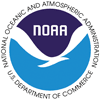Map Layer Info
| Historical Tropical Cyclone Tracks | |
What this map layer shows: The paths of tropical cyclones and major hurricanes from 1851 to 2004. |
 |
| Background Information | |
 Sample Map
Sample Map
Tropical storms are classified by wind speed and by the structure of the storm and include hurricanes, other tropical cyclones, subtropical cyclones, and related storms. The highest intensity storms, with the highest wind speeds, are hurricanes. Lower intensity storms have lower wind speeds and may not exhibit the convection and circulation properties found in hurricanes. Lower intensity storms can sometimes inflict greater damage than storms of higher intensity, depending on where they strike and the particular hazards they bring. A tropical cyclone is a warm-core, non-frontal low-pressure system that develops over tropical or subtropical waters, covering a large region and with organized convection (i.e. thunderstorm activity) and definite cyclonic (counter-clockwise circular) surface wind circulation. Examples are hurricanes, tropical depressions, and tropical storms. A subtropical cyclone, such as a subtropical depression or storm, is a low pressure system that develops over subtropical waters and that initially has a non-tropical circulation but in which some elements of tropical cyclone cloud structure are present. Subtropical cyclones can evolve into tropical cyclones. Related storms are those that develop into subtropical or tropical cyclones or develop from them, such as tropical disturbances, lows, waves, and extratropical storms. The National Atlas offers three map layers showing tropical storm tracks. These map layers were produced by the National Atlas of the United States® from data provided by the NHC. The Historical North Atlantic Tropical Cyclone Tracks, 1851-2004 map layer shows the paths of all recognized tropical cyclones in the North Atlantic from 1851 to 2004. The Historical North Atlantic Hurricane Tracks - Major Storms with Landfall in the United States, 1851-2004 map layer includes only the major storms from 1851 to 2004. Major storms are those that made landfall in the United States and that were classified on the Saffir-Simpson Hurricane Scale as Category 3, 4, or 5 at the time of landfall. Landfalling storms are defined as those storms whose center is reported to have either crossed or passed directly adjacent to the United States coastline, and which came ashore with tropical storm intensity or greater (sustained surface winds of 34 knots or 39 miles per hour or greater). The Historical Eastern North Pacific Tropical Cyclone Tracks, 1949-2004 map layer shows the paths of all recognized tropical cyclones in the eastern North Pacific from 1949 to 2004. Points defining the storm tracks were recorded every six hours. For each recorded point on a track, there is descriptive information which includes the storm location in geographic coordinates, the storm name, the storm intensity according to the Saffir-Simpson Hurricane Scale, wind speed, and barometric pressure. For answers to questions on tropical cyclones, visit the NOAA Atlantic Oceanographic and Meteorological Laboratory, Hurricane Research Division (HRD), Hurricane FAQ page. The NHC Hurricane Preparedness page and the NWS Hurricane Awareness page also have detailed additional information about hurricanes and tropical storms. HRD offers a page with lists of names used for tropical storms around the world. |
|
